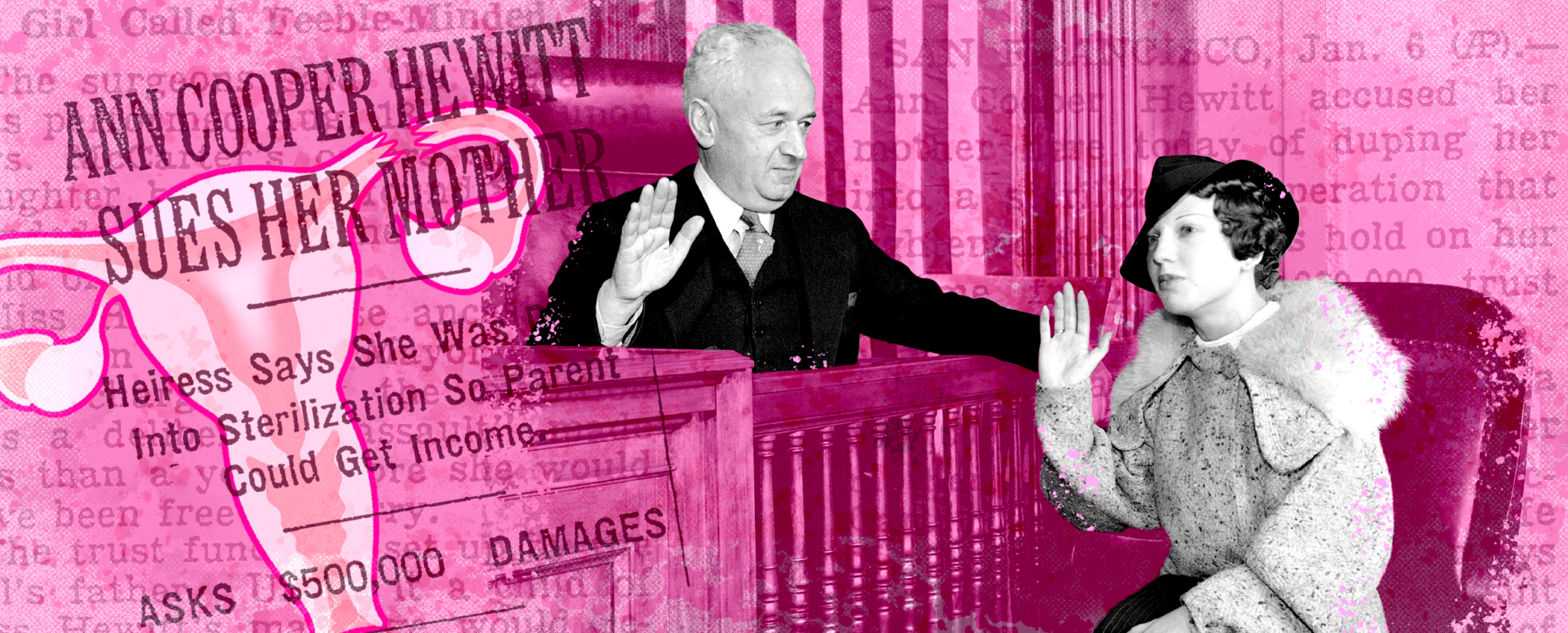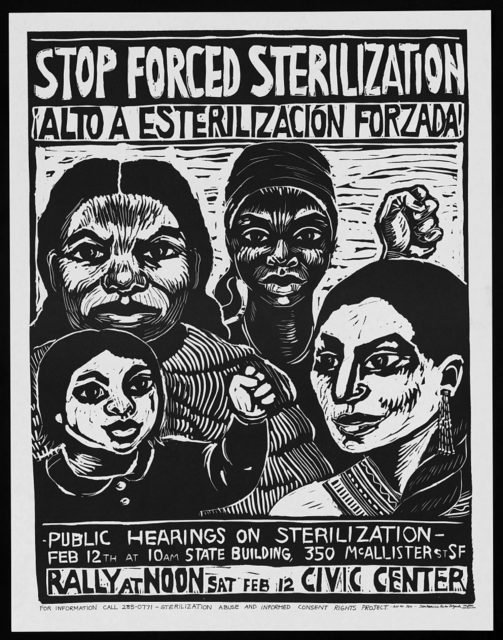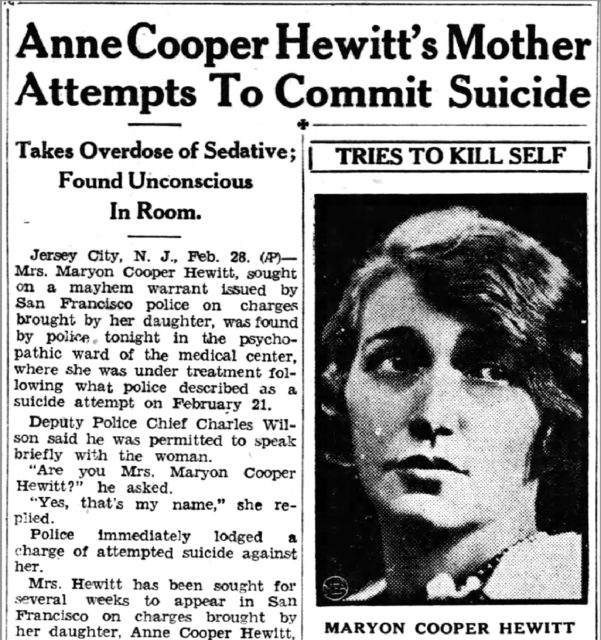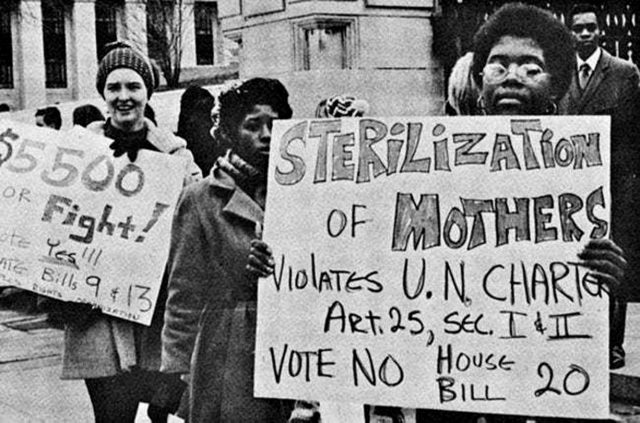
Bulbs flashed as the rouge- and fur-wearing socialite took the stand in a trial that would rivet the American public for the next several months. The image of the solemn-faced 22-year-old would appear in newspapers across the country. Some, like The New York Times, would print nearly 50 stories detailing the woman’s private life — her childhood, romantic relationships, drinking and spending habits, even the lingerie she was wearing. (It was imported from France.) It was January of 1936, and heiress Ann Cooper Hewitt was suing her mother in a San Francisco court for $500,000 (roughly $9 million today). The plaintiff claimed that her mother paid doctors to “unsex” her during an appendectomy in order to deprive her of an inheritance from her millionaire father’s estate. The defendant argued that she was merely protecting her daughter — and society — from the consequences of Ann becoming pregnant.
When Peter Cooper Hewitt died in 1921, the inventor and entrepreneur left two-thirds of his estate to Ann and one-third to Ann’s mother, his wife. But the will stipulated that Ann’s share reverted back to her mother if Ann died childless. Knowing this, Ann’s mother purportedly paid two doctors $9,000 each (about $165,000 today) to remove her daughter’s fallopian tubes along with her appendix when Ann presented at the hospital with stomach pains. This occurred merely months before the plaintiff’s 21st birthday, after which point Ann’s mother would have no further say in her medical care because Ann would no longer be a minor.
Ann’s mother insisted that she took this action because Ann was “feebleminded,” citing an intelligence test performed by a psychologist shortly before the procedure. A History Magazine story on the case by G.S. Payne reported that Ann could not answer questions such as “How long is the longest river in the United States?” and “What is the term of a U.S. president?” The defendant further claimed that her daughter was morally degenerate, referencing Ann’s addiction to masturbation, love letters between Ann and her chauffeur that contained the young lady’s pubic hairs, and Ann’s “erotic tendencies” with men ranging from bellhops to “Negro” train porters.
In response to these accusations, the plaintiff’s attorney swiftly called witnesses who could speak to Ann’s intelligence. “She writes fluently in French and can converse in Italian,” a physician affirmed via affidavit. “She has read books on Shakespeare, French history, Napoleon Bonaparte, Marie Antoinette, King Lear, Dante’s Inferno, and the works of Charles Dickens.” If there were any intellectual deficiencies, this witness wrote, they were due to Ann having been neglected by her mother for most of her childhood.
The young socialite developed this narrative on the stand. “I was locked up all the time,” Ann testified. “She never had any affection for me whatsoever. She would drink all night and drag me out at four in the morning to tell me if I’d die, she’d have all my money.” A nurse who cared for Ann after the operation corroborated her story, explaining that she’d been hired to look after a mental case but formed an entirely different opinion about the situation: “Half an hour after I saw the girl for the first time, I knew that here was no insane person. I observed three months of abuse of her by her mother. She was kept in pajamas upstairs. Her letters were censored. So were her telephone calls.” Ann’s attorney made a point to emphasize that Ann’s mother, Maryon Cooper Hewitt, known in Europe as the “greatest woman gambler in the world,” was a four-time divorcée. In court and when speaking with reporters, he referred to her by all of her married names: Mrs. Maryon Brugiere-Denning-Hewitt-d’Erlanger-McCarter. (Peter Cooper Hewitt, Maryon’s third spouse, was the only one she did not divorce, so she resumed her deceased husband’s name after her final marriage.)
As the spotlight moved from Ann’s “adrift” ways to her mother’s, it became clear to the public that both women were on trial for the same offense: being unqualified for motherhood. Wendy Kline, who wrote a chapter on the case in her book, Building a Better Race: Gender, Sexuality, and Eugenics from the Turn of the Century to the Baby Boom, explains that the public found nothing extraordinary about this focus, as 1930s society fixated on the ills of female sexuality and the importance of protecting maternal virtues during a time of social crisis. For Depression-era America, Kline writes, “the real problem was not financial but feminine.”
There was something else about this case that raised eyebrows: the unconventional use of sterilization. Ann appeared to have been sterilized because of environmental rather than genetic defects; she was the product of bad parenting, rather than bad genes. Furthermore, the involuntary procedure occurred in a private practice, rather than in an institutional setting. Ann was also wealthy, whereas the usual targets of sterilization (epileptic, intellectually disabled, and unemployed persons) were poor. If the court ruled in favor of Ann’s mother, these details could reinvigorate and redefine a flailing movement that embraced the practice of sterilization: eugenics.
The term “eugenics,” which translates to “well-born” from Greek, originated with English intellectual Sir Francis Galton. In his 1869 book Hereditary Genius, Galton drew on Gregor Mendel’s insights on the reproductive patterns of peas to advocate a selective breeding program among humans. Galton wanted to ensure that the characteristics he associated with the upper classes, such as superior intelligence, were passed down. Galton’s theories significantly shaped policies in the United States, as Edwin Black’s volume, War Against the Weak: Eugenics and America’s Campaign to Create a Master Race, demonstrates. According to Black, the Englishman’s ideas inspired Charles Davenport, a prominent American biologist, to establish the Eugenics Record Office (ERO) at Cold Spring Harbor Laboratory in New York in 1910. Davenport appointed Harry Laughlin as the first director, and the two hired field workers to collect family pedigrees from the public. These workers were especially eager to identify “defective” traits, such as poverty, intellectual disability, and criminality. With the support of philanthropic organizations, such as the Carnegie Institution, and certain government offices, such as the Department of Agriculture, the ERO campaigned for stringent immigration restrictions and helped to pass legislation in 28 states authorizing the sterilization of persons deemed to be “unfit.” Over 64,000 individuals went under the knife as a result of these laws.

An anti-forced sterilization poster by the artist Rachael Romero, 1953. Photo courtesy of the Library of Congress.
One of them was Carrie Buck, an impoverished woman in rural Virginia who conceived a baby out of wedlock. Authorities used this fact to claim that she, like her mother, was promiscuous. (Buck claimed to have been raped.) After Buck was sent to an epileptic colony and sterilized against her will, a lawyer representing Buck sued the medical authorities acting on behalf of the state. (He was collaborating with the defense to test the legality of the new legislation.) In 1927, the case, Buck v. Bell, went all the way to the Supreme Court, which upheld the ruling of the Virginia courts. Chief Justice Oliver Wendell Holmes famously opined, “It is better for all the world, if instead of waiting to execute degenerate offspring for crime, or to let them starve for imbecility, society can prevent those who are manifestly unfit from continuing their kind …. Three generations of imbeciles are enough.”
But by the time Ann Cooper Hewitt’s trial commenced in 1936, the “science” behind eugenics was proving to be rather shoddy. In her chapter on the case, Kline explains that both genetic researchers and biologists were beginning to realize that the inheritance of positive or negative traits extended well beyond one generation. A prominent biologist at Johns Hopkins noted that even if all of the “feebleminded” persons in the country were sterilized, it could take 68 generations to decrease the proportion of those traits in the population. This was because “normal” people could be carriers of the trait. Colleagues elaborated on this criticism, claiming that it was impossible to identify potential carriers of “bad genes” and that eugenicists completely disregarded the role of the environment in the development of traits.
The rise of the Nazi party in Europe delivered another blow to the eugenics movement. In 1933, under the new leadership of Adolf Hitler, the Nazis implemented a eugenic sterilization program that impacted more than 350,000 individuals. At first, leading eugenicists in the United States were thrilled to see what the Nazis had accomplished using their own programs as blueprints. Some, like Joseph DeJarnette of Virginia’s Western State Hospital, were even a little envious to observe, “The Germans are beating us at our own game.” But eugenicists soon realized that Hitler’s persecution of the Jews could seriously undermine support for sterilization in the United States. While the full horror of Hitler’s plans had not been made known to the world, the dictator had already become extremely unpopular among Americans. For the first time, eugenicists second-guessed their rhetoric of “racial integrity” and “race betterment,” thinking it better to find a new idiom with which to describe the noble work of the movement. The Cooper Hewitt case provided that idiom.
* * *
In February of 1936, an ambulance was called to the Plaza Hotel in New York City, where a guest registered under the name “Mrs. Jane Merritt” was found unconscious. It appeared that the woman had consumed an overdose of a sleeping potion. While convalescing in the hospital, she was charged with the crime of attempted suicide. But this was not the extent of her legal troubles; there was a police warrant for her arrest in California, where she awaited a criminal trial. The woman was Ann’s mother, Mrs. Maryon Cooper Hewitt.

A newspaper report about Maryon Cooper Hewitt’s attempted suicide, February 29, 1936. Photo courtesy of The Owensboro Messenger Archives.
Shortly after Ann had filed her civil suit, the San Francisco prosecutor charged Cooper Hewitt and the two doctors responsible for Ann’s salpingectomy with the felony of mayhem, a criminal charge reserved for cases involving the act of disabling or disfiguring an individual. The two physicians were arrested and released on bail while they awaited the trial. Mrs. Cooper Hewitt filed an affidavit asserting her innocence and then fled to the East Coast, where she tried to end her life. For the next several months, her physician ordered her to stay in a New Jersey sanitarium. When she recovered from the psychiatric event, he informed authorities in California that his patient was still “in a very serious condition,” explaining that she had heart and intestinal troubles aggravated by pneumonia. The criminal case against the doctors in California would have to continue without her testimony, he said.
And so it did. The doctors’ attorney prepared his defense by corresponding extensively with Paul Popenoe, secretary of the Human Betterment Foundation and founder of the Southern California branch of the American Eugenics Society. Once he had a firm grasp on the eugenic arguments in favor of Ann’s sterilization, he called experts to articulate those talking points. These experts insisted that it mattered little whether Ann’s abnormalities were genetic, as she was certain to make an unfit mother. They also claimed that her nurse’s testimony counted for nothing, as only physicians were qualified to detect feeblemindedness. The testimony lasted only six days before the judge, convinced of Ann’s promiscuity and the wisdom of her doctors, dismissed the charges against the doctors. He justified his decision on the grounds that Ann was a minor at the time of her sterilization, implying that the surgery had been performed legally with parental consent.
This did not mean that Mrs. Cooper Hewitt was absolved of the charges brought against her. But Ann decided not to testify against her mother and to settle the civil suit for $150,000. She may have felt sympathy for her kin, weariness with legal proceedings, or the desire to escape public scrutiny. Since the New Year, she had been excoriated by the press, as these verses about her printed in The New York Daily Mirror suggest:
I’m only a sterilized heiress,
A butt for the laughter of rubes,
I’m comely and rich
But a venomous bitch-
My mother ran off with my tubes.
Oh, fie on you, mother, you bastard,
Come back with my feminine toys,
Restore my abdomen,
And make me a woman,
I want to go out with the boys.
The caricature expressed by this journalist was by no means universally accepted. Many sympathized with the woman who had testified, “I had no dolls when I was little, and I’ll have no children when I’m old.” That year, Ann received thousands of supportive letters, including many marriage proposals.
Without Ann’s testimony, the prosecutor in San Francisco had no choice but to drop the charges against Maryon. Even with her legal troubles resolved, Ann’s mother never fully recovered from her attempted suicide and illness — nor from her fall from the upper echelons of society. Just a few years later, she died in her Manhattan apartment from an apparent cerebral hemorrhage. The attendance at her funeral was as slight as The New York Times’s few lines covering the event, Payne writes. But among those in attendance was Ann, who would also marry five times and then die at an even younger age (40 years old). As she wept at her mother’s graveside, Ann suggested to the public she was, if not a fit mother, at least a forgiving daughter.
Unfortunately for other young women in America, one’s capacity for motherhood was still all that mattered when it came to certain civil liberties. And thanks to the Cooper Hewitt case, the burden of proof to demonstrate a woman’s unfitness for motherhood was even lower than it had been when “defective” genes were the focus. Previously, eugenicists had to produce evidence of disease or degeneracy based on one’s family tree or intelligence tests (although both of these rubrics were skewed). Now they only needed to establish that a woman had a morally bankrupt mother; it followed that she would become one herself.
With this shift in emphasis from heredity to maternal care, eugenicists admitted that family pathology was not an exclusive problem of the poorer classes; it could result from any woman’s desertion of domestic duties. Decisions related to sterilization, therefore, needed to be made on a case-by-case basis. Eugenicists insisted that this policy distinguished American efforts from the heinous goings-on abroad. Nonetheless, authorities like Popenoe and his colleagues at the Human Betterment Foundation focused their attention on poor and minority classes. Over the next four decades, 20,000 women in California (and hundreds of thousands around the country) underwent the procedure that Ann unknowingly received. The majority were black, Puerto Rican and indigenous persons.
Physicians often recorded these procedures as “voluntary.” They claimed that women were motivated by a sense of responsibility to climb on the table, citing widespread support for sterilization. Kline explains that, following the sensational case in California, the public no longer regarded motherhood as a woman’s right, but instead as a responsibility to be exercised by a certain few and avoided by others. This is suggested by the fact that, despite widespread coverage of the Cooper Hewitt case, there were neither protests against the judge’s dismissal of the doctors’ charges nor public uprisings about sterilization in general. Kline also cites a Fortune magazine survey conducted in 1937 demonstrating that 66 percent of readers favored compulsory sterilization while only 15 percent opposed the practice. The Great Depression and the Second World War reinforced these attitudes, as these national crises convinced Americans of the need for a citizenry with discipline, industry, and other virtues believed to be cultivated in a good home.

An anti-sterilization protest, circa 1971. Photo courtesy of the Southern Conference Educational Fund, via UCLA Hammer Museum.
In 1979, California formally repealed laws authorizing sterilization in the state, but the practice has continued illegally. In 2013, a state audit found that between 2006 and 2010, 144 women in the prison system underwent a bilateral tubal ligation under conditions of missing or dubious consent. In some cases, the sterilizations even took place without individuals’ knowledge. Targeted inmates shared a profile: They typically tested below a high school level of reading proficiency, had been pregnant five or more times, and were between 26 and 40 years of age.
In recent years, there have been many reports of court-ordered sterilizations across the country, including that of a 21-year old West Virginia mother whose tubes were tied as a term of her probation for marijuana possession. In 2015, news broke that prosecutors in Nashville, Tennessee, stipulated birth control in plea deals with certain defendants. More recently, a judge in that state issued a standing order promising women a 30-day sentence reduction in exchange for a birth control implant. (He also offered men a sentence reduction in exchange for a vasectomy.) He explained his order by saying, “I hope to encourage [the inmates] to take personal responsibility and give them a chance, when they do get out, not to be burdened with children.” He added, “This gives them a chance to get on their feet and make something of themselves.” Just like Mrs. Cooper Hewitt and the eugenic authorities of her day, he insisted that the measures were protective, rather than punitive.
Such comments suggest that the environmental logic of eugenics continues to inform social and clinical practices. (So does the hereditary logic of eugenics, as suggested by some efforts to restrict the reproductive rights of disabled and chronically ill women, who are believed not necessarily to make “bad” choices but to have “bad” genes.) Though largely unknown today, the Cooper Hewitt case helped to form that logic. The trial in San Francisco shaped public attitudes about the dangers of domestic environments in which an ideal mother is lacking. It set a legal precedent that it is a woman’s moral responsibility to surrender her biological capacities for the good of society.
For some women impacted, the social and psychological consequences of sterilization cut deeper than the physical wounds. The humorist who rhymed about Cooper Hewitt in The New York Daily Mirror suggested this when he concluded his poem:
Oh, fie on you, mother, courthouse and ruling
I want my twin bubbles of jest,
Take away my hot flashes,
And menopause rashes,
And let me feel weight on my chest.
While intended to satirize what the author perceived to be Ann’s hypersexuality, these verses bespeak a sad reality for many sterilized women. Often, the prospect of heterosexual romance and intimacy (and economic stability, by extension) are extinguished during the procedure, as many men are uninterested in partners who cannot bear their children. (It is conceivable that some of Ann’s marriages failed for the reason that they were not fruitful.) Their bodies carved, women become as unwanted as their offspring.
Audrey Farley is writing a book on Ann Cooper Hewitt. Her work has appeared or will soon appear in The Atlantic, The New Republic, The Washington Post, Longreads, Public Books, Lady Science, and Marginalia Review of Books, where she is a contributing editor.